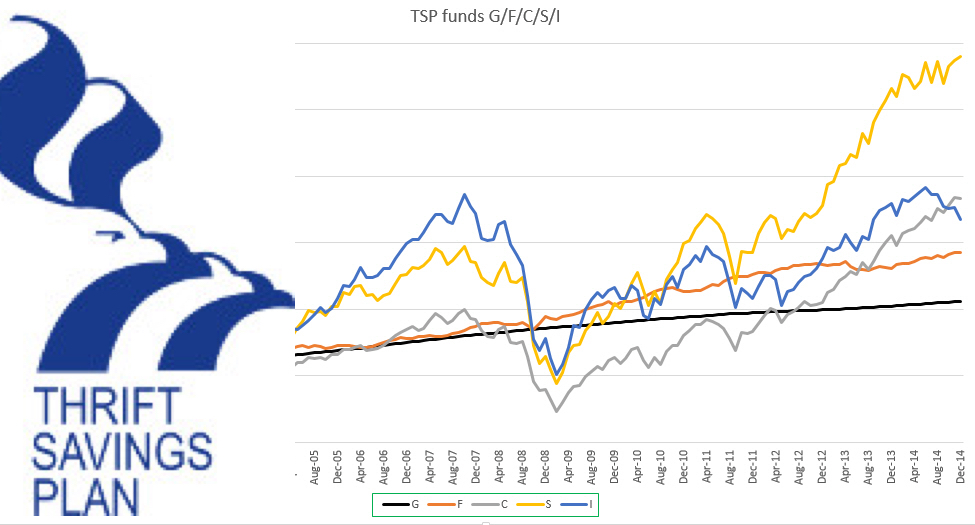Taking Risks with your TSP

With its focus on American Treasury securities, the G Fund is the most invested fund in the Thrift Savings Plan or TSP. Before 2015 it was the default fund for TSP enrollees who hadn’t made any moves to divide up their assets between different investments. Because the G Fund’s principal and interest is backed by the Government, it is the safest bet of all possible TSP investment options.
The main failing with the guarantees offered to employees through the G Fund is that people playing it safe with that investment might miss out on many of the chances to grow their retirement fund through other avenues in the market. And with things like inflation, a wavering growth in the market, the safe retirement fund you’ve been saving towards might not be as much as you thought by the time you reach it.
Take the period between 2009 and 2018, for example, wherein the return on the G Fund was only 2.3 percent, while the return on the S&P 500 C Fund was much higher, at 13.17 percent. That’s a big difference. Even taking out the huge market fluctuations in 2009 and 2010, the C Fund still averaged a return of 8.53 percent.
It may sometimes be wise to move assets to the G Fund during periods of market unrest, especially when you’re close to retirement age, but during these periods of economic downswings, the savviest move for investors would be to put their money into the C Fund; it is cheaper, and essentially investing like it was on a discount.
The reason people might be risk-averse might lay in the structure of the TSP itself. How can workers make investments based on the risk and rewards of certain funds when the TSP doesn’t provide any of that information. A lot of investors either have to guess or play it safe, opting for things like the G Fund. This is not a great move as through things like FERS current pensions are not as big as they used to be two or three decades ago.
This isn’t to claim that an investor should ignore the G Fund completely, but it is usually a wise move to diversify and put your money into different investments, and not miss out on any gains.
While things like fear of market losses, are totally valid, more often than not, the main reason people tend to play it safe with investments is listening to bad advice from a co-worker who, while most likely having your best interests at heart, are not financial advisors, nor do they know all the details of your particular circumstance. Things like moving, personal goals, debt, and your retirement date all are factors in how and when you should be moving your investments around. Setting goals and then following through are the key factors in deciding how to invest.
While the TSP has occasionally addressed investing over time and risk management before, including the retirement income calculator offered on their website, these resources are not the end all of advice in the matter either. While risk-averse planning is an excellent place to start, in order to make the most of your future retirement, it would make sense to get a fuller spectrum picture of what certain annuities might do as for their possible reward on return.
The best plan is knowing what you want, and then working backward to figure out the best way to get there. Professional financial advisors, both within and from beyond what the TSP offers, is an excellent way to go. They can steer you in the right direction, or at least give you a bigger picture of what you may or may not be missing out on by keeping your retirement fund focused on the low-risk investments only.





